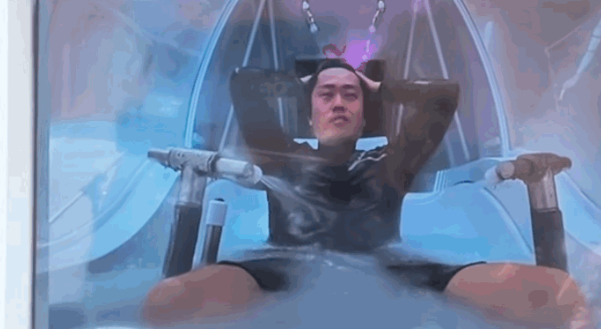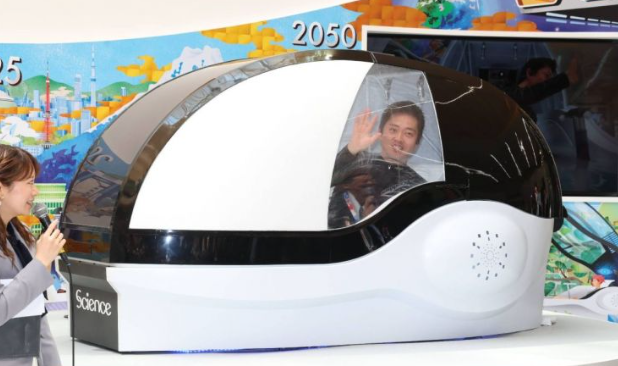
The “body washing machine,” which first appeared in Japan more than 50 years ago, has advanced to a commercial level and has been unveiled again this year. The Japan Times and other Japanese media reported on Monday that the “future human washing machine” introduced by Science Holdings, a maker of shower parts, drew much attention. Hirofumi Yoshimura, the first person to experience the product, appeared in shorts and slippers at the exhibition. He took off his jacket and entered a capsule-like booth as tall as an adult man. Sitting on a chair tilted at an angle like the driver’s seat, the lid closed. Soon after, the windows on both sides of the booth were full of hazy moisture. Hot bathwater came out from inside. There are soap bubbles that can wash your hair, and it even dries with wind after you wash it.
When the lid opened, Governor Yoshimura looked at the machine with a moist face. After the experience, I wiped my slightly wet face and hair with a towel. After the experience, he said, “I was worried that it would be uncomfortable to breathe, but there was no problem at all,” and expressed satisfaction, saying, “The shower was soft and I felt very good.” He then predicted, “This could be the form of a bath in the future,” and “It could be used in caring for the elderly.”

In Japan, the machine is called a “human washing machine.” When a person taking a bath sits in a seat, the capsule is filled with water and the appropriate temperature is automatically checked to start operation. It takes about 15 minutes to wash and dry everything. Yasuaki Aoyama, CEO of Science Holdings, said that he first saw a shower machine at the Osaka Expo in 1970 when he was 10. At the time, Japan’s SANYO displayed a prototype of a capsule shaped like a spaceship that was washed by making air bubbles with ultrasonic waves. Aoyama said that this was the reason he was impressed by the development of a shower machine.
In the future, the company plans to add a function that identifies age, skin, and fatigue with artificial intelligence (AI) and optimizes each person. In Japan, which has a large elderly population, the idea of a human washing machine is already being used in nursing homes. The main users are the elderly or the severely handicapped, who have difficulty even going into the bathroom. Water and soap come out of the shower hose in the form of a vacuum cleaner head, and the bed is not wet as it is sucked in at the same time as it touches the body. Meanwhile, as Yasuki mentioned, smartphones, rotary sushi, and canned coffee that were unveiled at the Expo in 1970 have all become a reality. However, since human washing machines have not been commercialized yet, much attention is being paid to whether or not to commercialize the products in question, according to local media.
JENNIFER KIM
US ASIA JOURNAL



